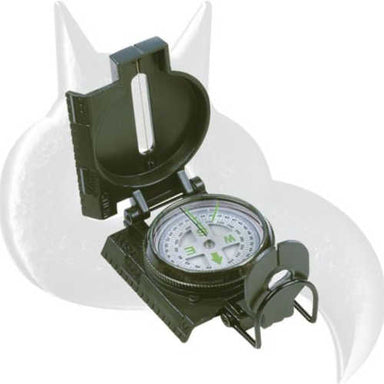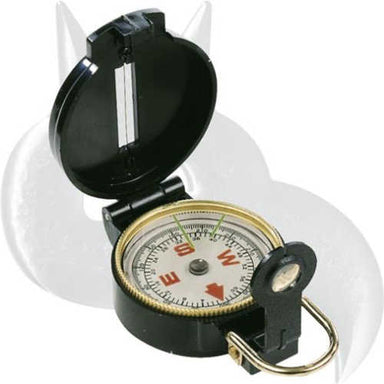
Black Fox | Bussola Military Compass | TS820
The Black Fox Bussola Military Compass TS 820 is truly one of a kind compass. Incredibly accurate and readable at 2' in diameter. This Compass has...
View full detailsCompasses are essential tools for navigation, whether you're exploring the outdoors, hiking, camping, or engaging in any activity where knowing your direction is crucial. They help you find your bearings relative to magnetic north and can be lifesaving in unfamiliar terrain.
Baseplate Compasses:
Lensatic Compasses:
Thumb Compasses:
Button Compasses:
Accuracy: Look for compasses with precise needle movements and minimal interference from nearby metal objects.
Durability: Choose compasses made from robust materials such as metal or impact-resistant plastic, suitable for outdoor conditions.
Declination Adjustment: Some compasses allow you to adjust for magnetic declination, aligning with true north for more accurate navigation.
Glow-in-the-Dark: Compasses with luminescent markings or needles are useful for low-light or night-time navigation.
Sighting Mirror: Advanced compasses may include a sighting mirror for accurate bearings and signaling.
Intended Use: Determine whether you need a basic compass for occasional use or a more advanced model for serious outdoor navigation.
Size and Weight: Consider portability and how easily the compass can be carried with your other gear.
Budget: Compasses vary widely in price, so decide on a budget that aligns with your needs and preferences.
User-Friendliness: Ensure the compass is easy to read and use, especially under stress or adverse weather conditions.
Calibration: Regularly check and adjust for magnetic declination based on your location.
Map Reading: Learn how to integrate compass navigation with map reading for efficient route planning.
Practice: Familiarize yourself with using the compass in different environments and conditions before relying on it in critical situations.
Maintenance: Keep your compass clean and dry to ensure accurate readings and longevity.
A reliable compass is a fundamental tool for outdoor navigation and safety. By choosing one that suits your specific needs and preferences, you can confidently explore new environments and navigate with precision, whether you're on a trail, in the wilderness, or simply exploring unfamiliar urban areas.
 Save Liquid error (snippets/product-badge line 32): Computation results in '-Infinity'%
Save Liquid error (snippets/product-badge line 32): Computation results in '-Infinity'%
The Black Fox Bussola Military Compass TS 820 is truly one of a kind compass. Incredibly accurate and readable at 2' in diameter. This Compass has...
View full details Save Liquid error (snippets/product-badge line 32): Computation results in '-Infinity'%
Save Liquid error (snippets/product-badge line 32): Computation results in '-Infinity'%
The Black Fox Bussola Compass Military Stainless Steel Bail OD Green Metal Casing TS819 is 2" in diameter and has the ruggedness and quality to get...
View full details Save Liquid error (snippets/product-badge line 32): Computation results in '-Infinity'%
Save Liquid error (snippets/product-badge line 32): Computation results in '-Infinity'%
This Black Fox Map Compass is a perfect addition to your kit in case you lose your way in the wilderness or just need to navigate somewhere. In co...
View full details Save Liquid error (snippets/product-badge line 32): Computation results in '-Infinity'%
Save Liquid error (snippets/product-badge line 32): Computation results in '-Infinity'%
Made and Imported from Italy the Black Fox Bussola Campeggio (Compass) TS815 in Plastic is a vital pice of equipment one should never leave home wi...
View full details Save Liquid error (snippets/product-badge line 32): Computation results in '-Infinity'%
Save Liquid error (snippets/product-badge line 32): Computation results in '-Infinity'%
Defcon5 Camping Compass – Compact Military-Grade Button Compass Navigate with confidence using the Defcon5 Camping Compass, a rugged, ultra-compact...
View full details
